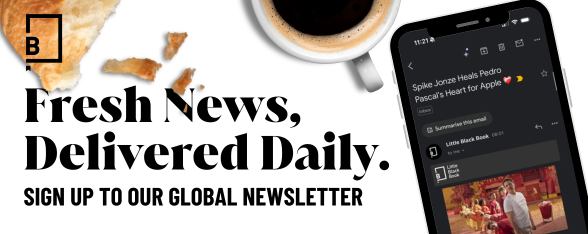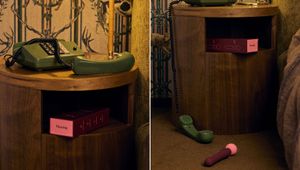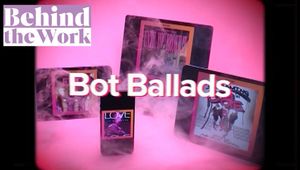
Brick by Brick: 90 Years of Lego Brand Building

This year Lego turns 90. The megabrand sells tens of billions of bricks every year. It has spawned its own movie franchise. It’s so famous that, according to YouGov, it’s a brand that is known by 99% of people - across gender, across age, across political bent. It’s the only toy brand to appear on the Interbrand top 100 ‘Best Global Brands’ list.
So how did Lego become the biggest toy brand in the world? Its beginnings were deceptively humble. Responding to the economic pressures of the Great Depression, in 1932, Ole Kirk Kristiansen founded a wooden toy company in his workshop in Billund, Denmark. The Lego name became a North Star for the business - Lego is a contraction of two Danish words, leg (play) and godt (well). And for the past 90 years it has spread around the world helping kids (and adults) to play… well.
This year, the brand has been celebrating its momentous 90th anniversary with a series of special creative activations. There’s a photography project with Rankin that features Lego fans from ages one to 90, and an enormous playground-cum-art installation in Harlem. And as it looks towards its 100th anniversary, Lego is exploring new digital frontiers of play and undergoing a radical sustainability transformation.

This toy brand built on a system of interlocking bricks, that delighted children in the ‘30s and ‘40s continues to be relevant today. So what’s behind Lego’s staying power? According to Alero Akuya, vice-president of global brand development at the Lego Group, it’s all rooted in the timeless unity of the product, as well as the brand’s willingness to play, experiment and evolve.
“One secret behind our success in appealing to kids of all ages, generation after generation, is our ‘Lego System in Play’. In a sentence, the Lego System in Play means that all elements fit together, can be used in multiple ways, and can always be built together. Amazingly, this means that Lego bricks bought decades ago will fit perfectly with bricks bought in shops today and will continue to fit with our bricks for the next 90 years to come! Adopting this system has given the Lego brick an enduring appeal,” says Alero.
“In addition to this, we’ve also continually evolved our brand to present new and exciting offerings for our audience. In recent years, we have expanded beyond the brick. For example, we have released The Lego Movie, partnered with global brands such as adidas and MOMA and even recently entered the gaming sphere with Epic. As a result, the Lego brand now transcends language, culture, age and interests to provide creative experiences for people around the world, however they choose to build and play.”
90th anniversary campaign film, directed by Oskar Bård and produced by Hobby Film.
Ninety years of play means that Lego has an incredible history of innovation. Chatting to Alero about the brand’s evolution sees her rattle off a toybox full of invention. In 1949, the company released its first plastic brick (which was called the ‘Automatic Binding Brick’). 1955 saw Ole’s son Godtfred establish the aforementioned Lego System in Play. The very first LEGOLAND park opened in 1968. The toddler-focused brick DUPLO launched in 1968. The iconic minifigures made their debut in 1978. In 1980, the brand set up a department to help teachers bring play-based learning to schools (that department is now known as the Lego Foundation). Programmable bricks that combined the Lego System in Play with robotics was created in 1998. In 1999 the Lego Foundation acquired a 25% stake in the company, meaning that profits were used to help children to play and learn. In 2014, Lego became an entertainment franchise with the launch of the Lego Movie. That was followed by the opening of the Lego House, Home of Bricks - and, excitingly, in 2021 the company unveiled a prototype brick made from recycled PET plastic bottles.
“From a few simple bricks in primary colours, the humble Lego brick has formed the basis of over 18,000 Lego products and been developed into many, many different themes. At present, we have around 30 different global themes in our collection,” says Alero.
Finding the sweetspot where the physical and digital worlds meet have been a key strategic concern for the brand as Generation Alpha grow up taking tech for granted. In April 2022, the company announced that it would almost triple the size of its digital team over the next three years. Back in 2013, an interview with then-Head of Social Media Lars Silberbauer revealed a brand still getting its head round social media - and just four years later in 2017, it had launched Lego Life, it's very own social media platform, envisioned as a safe 'walled garden' for under 13s. From 2017 onwards, it also really started embracing augmented reality in a big way, launching various apps like Lego AR-Studio in 2017, Lego Hidden Side in 2019 and 2021's VIDIYO (a collaboration with Universal Music Group that allows users to use AR tech to make music videos with their Lego sets). They're also getting into the gaming and metaverse space with a partnership with Epic Games that aims to make the emerging metaverse space safe for kids.
Across all of this, what Lego has really mastered is the ability to experiment with different ideas and platforms and spaces while staying absolutely clear about its values. These have, says Alero, stayed consistent over the years and even include principles that were important to founder Ole Kirk Kristiansen himself. Broadly speaking, these values can be grouped into six main elements: Imagination, Creativity, Fun, Learning, Caring and Quality.
“We’re committed to ensuring that we stay true to these values, which is why we developed a brand guideline, which you can view here,” says Alero. “By creating this framework, we have reinforced the Lego Group’s core brand elements and we’re also able to ensure these values are core to everything we do. It includes principles first developed by our founder Ole Kirk Kristiansen many years ago, such as our ‘only the best is good enough’ spirit, and also more modern additions like our play, people, partner and planet promises.”
Over the decades, Lego has also produced some iconic marketing that has helped lodge the brand in our collective consciousness. Perhaps the most obvious is the 1981 ‘What It Is Is Beautiful’ print ad, featuring a cheeky-but-proud little girl, showing off her Lego creation. It’s a campaign that is dear to the company’s heart and continues to inspire marketers at the company. On International Women's Day 2021, the brand underlined that point with a poignant Instagram post.

“The ‘What It Is Is Beautiful’ advert was a great representation of the Lego Group’s core belief that children are our role models. Through this advert, we were able to clearly convey our message that Lego looks to children for inspiration every day. We want to help them break down gender stereotypes and create opportunities for everyone. We must continue to play our part in building a more inclusive world, starting with our own organisation,” says Alero. “Despite being first launched over 40 years ago, the sentiment still rings true. In fact, we recreated the advert in 2021 to mark International Women’s Day. We tasked a new generation of girls to build, unbuild and rebuild and captured their inspiring creations. You can see the incredible results on our Future Builders site here.”
Perhaps one of the biggest game-changers in recent years was the launch of the Lego Movie. Following its launch in 2014, it boosted the brand’s profits by 12% - but longer term, it also shifted the company’s perspective on what it could mean to be an entertainment franchise. Prior to that, its entertainment output had been more typical of the toy sector - for example CG kids’ cartoon Ninjago was a long-running series launched in 2011 to market the Lego Ninjago toy line. But The Lego Movie - and even its sequels - were mainstream family hits that appealed to adults and children alike. With Lego Batman, it created arguably the strongest DC movie for decades - and became an entertainment IP that brands from Chevrolet to Sky were eager to partner up with. In 2017, it also launched another cross-generational property, the reality show Lego Masters, which has had versions air in 16 different countries.
“The launch of the Lego Movie helped us as a brand to inspire our ever-growing audience,” says Alero. “We knew it presented an opportunity to create entertaining content that deepened engagement with core audiences and enhanced the overall Lego Play experience. By creating a new way of engaging with Lego – through bringing it to the big screen – we were able to truly bring the brand to life like never before. The subsequent franchise then allowed us to invite fans to further celebrate the brand with us.”
2019's Rebuild the World Launch from BETC Paris and Traktor - check out our behind the work story on it here.
In recent years, Lego has been leaning into the magic of play and imagination in a series of outlandish and eclectic blockbuster ads that bring fantasy to life. 2019 saw the launch of the 'Rebuild the World' platform, a global campaign platform which has seen the brand collaborate frequently with the directing collective Traktor. The past few years has also seen Lego's in-house creative agency step up and take the lead on the blockbusting, global above the line campaigns too.
2020's Holiday ad, directed by The Bobbsey Twins
It’s no surprise that the marketing strategy is woven through with creativity and playfulness. “Play, creativity and marketing are all very closely interconnected. In marketing and brand strategy, we are constantly referring to creative play as we believe it enables imagination, self-expression and social connections. As such, we’re constantly placing play at the forefront of our storytelling,” says Alero.

A case in point is the new ‘Fly Away Isles’ project in Harlem, a collaboration with artist Hebru Brantley and non-profit youth development organisation The Brotherhood Sister Sol. Inspired by research that revealed 29% of parents in the US say they don’t play enough as a family, they created a colourful new play space in West Harlem.
“We know that play is fundamental to the wellbeing and happiness of the whole family – it has the power to change lives and brings us closer together, but in today’s busy world, families are finding it hard to prioritise it. We hope the new accessible, inclusive, and creative space brings more play to the streets of West Harlem and inspires those of all ages to take an extra moment to play and experience the joy and benefits it brings for themselves,” says Alero.
“It was amazing to see how Lego fuelled the children’s imagination,” she continues. As a brand, we want to turn children’s dreams into a reality, which can then be turned into action. The original workshop was so important to show the children how their actions, dreams and visions can create change and manifest in the real world.”
The Damp Knight ad launched in 2021...
Throughout its lifespan, Lego has been driven by the belief that play is crucial to children’s development. Ole Kirk Kristiansen himself intended to teach children about the world and help them to develop important skills with his original wooden toys. It’s an area where Lego continues to pioneer research. In the most recent Play Well report, 55,000 parents and kids across over 30 countries were canvassed. It finds that nearly all parents think that play helps children strengthen their creativity (93%), communication (92%), problem-solving skills (92%), and confidence (91%).
“At the Lego Group, we will continue to be guided by our research into the importance of play to make sure we continue to influence generations of children and educators,” says Alero.
Another area where the brand continues to spearhead research and development is in the shift to a more sustainable supply chain. In 2018, they launched their first plant-based plastic products, made from bio-polyethylene (made from sustainably sourced sugar cane). It’s gradually entering the products, with over 150 elements made from bio-PE available for use in sets. These are mainly botanical elements and minifigure accessories.
Aside from the environmental commitments and ambitions, Lego has also been building on its diversity, equity and inclusion. That builds on a DNA that’s long been present in the marketing - see the 1981 print campaign - but now it’s more codified. In 2021, they launched an ‘Everyone Is Awesome’ set (inspired by the ‘Everything Is Awesome’ Lego Movie theme song) to underline the brand’s intention.
“It embodies our commitment to building a more diverse and inclusive organisation where everybody belongs, to help us reach and inspire every child (and adult…) in the world. We believe that Lego play is for everyone, no matter your race, your gender, how you identify or who you love,” says Alero.
More recently, the ‘A-Z of Awesome’ was a Pride Month campaign in which LGBTQIA+ families were invited to express their identities via Lego builds. “At the Lego Group, it’s so important to celebrate inclusivity, acceptance and self-expression, and we know that Lego bricks can be a great medium to do this. I loved seeing the fan’s creations and hearing their inspiring stories,” says Alero.
In many ways, that innate inclusivity and universality of the humble Lego brick is part of its enduring appeal. A brick can become anything, after all. Throughout its journey, Lego has continued to innovate, whether bringing in technologies like augmented reality and robotics, or developing new materials, or opening out its community. But through it all, that simple brick and clarity of mission endures.
“Our mission is – and will always be – to inspire and develop the builders of tomorrow through play,” says Alero. “This means continuing our efforts to ensure children around the world can play and learn, and to reach more children with Lego play and the benefits it brings.”















